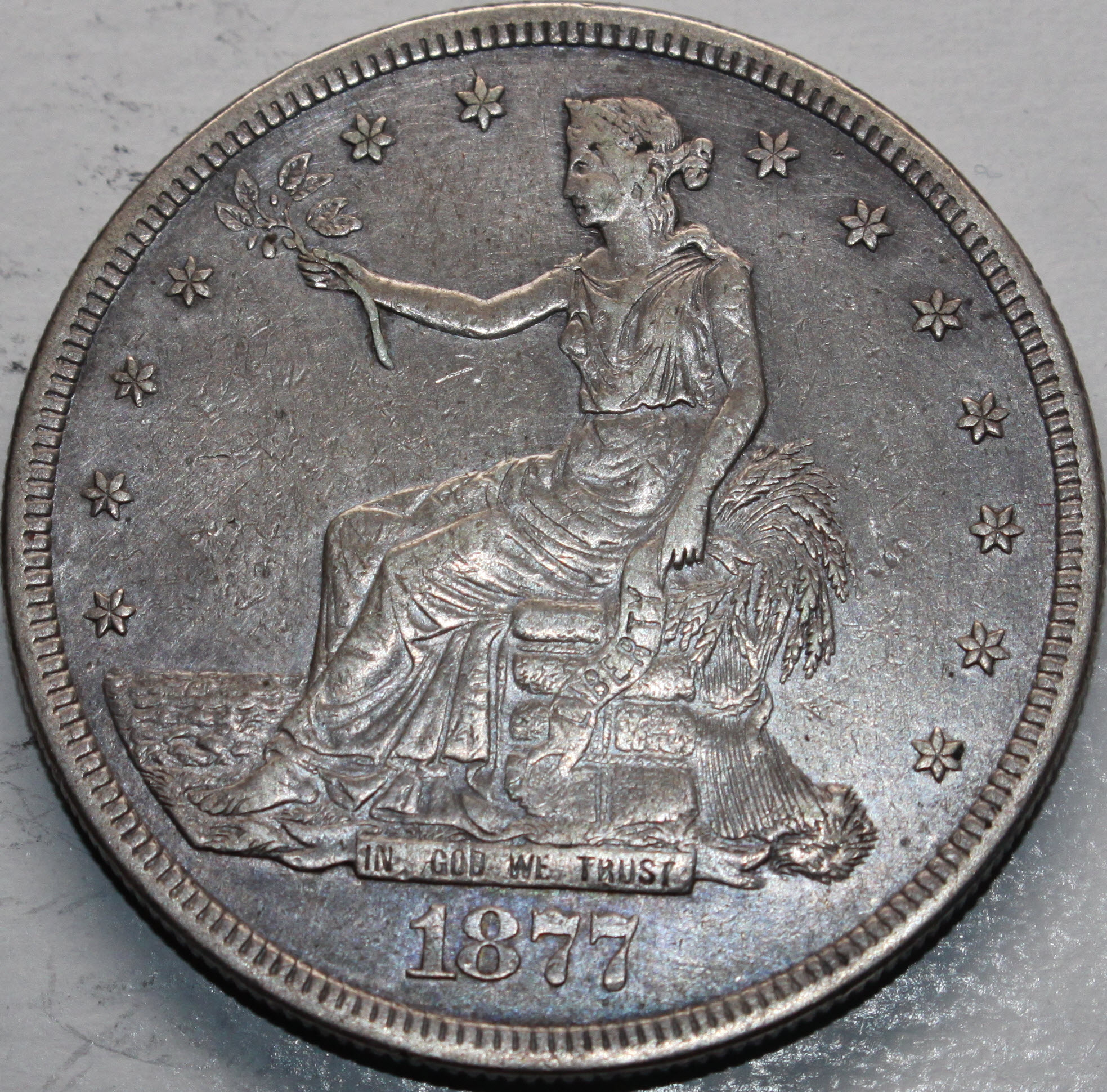Trade Dollars
Posted by Tom Deaux on Sep 24th 2020
Background
In the late 1800’s China transacted much of their commerce with Silver coins, mainly the Spanish Peso. The Peso had slightly more Silver than the US Silver Dollars. The Peso has 24.25 grams of Silver, the Dollar has 24.00 grams.
The US wanted to use their own silver for commerce with China rather than buying Pesos (with a marked up price) for this use. The US wanted to compete with the Peso with a heavier coin.
The current Seated Liberty Silver Dollars contained 0.77 Troy Ounces of Silver (24 grams). The new Trade Dollar would have 0.79 Troy Ounces.
Charles Barber designed the new Trade Dollar.
Design
The Obverse is like its predecessor in that it has a seated Liberty figure. Liberty is facing left, seated on a stack of merchandise. Her right hand extends an olive branch, and her left hand has a ribbon labelled “Liberty”. The US motto “In God We Trust) is shown over the date. 13 Stars are arranged in a semi-circle near the edge of the coin.

The reverse shows an Eagle holding three arrows and a branch. The 420 grain weight which was the feature that the coin was based on is shown under the eagle along with “900 Fine” which is the purity of the silver in the coin. The mint mark is found over “TRADE DOLLAR” at about 6 O’clock. “UNITED STATES OF AMERICA” is spelled out over the "E Pluribus Unum" banner at the top of the coin.

Mint Marks
The Trade Dollar was minted in Philadelphia, Carson City, and San Francisco. The mint marks are found at 6 O’clock over the “TRADE DOLLAR” text
The Philadelphia coins have no mint mark
Carson City coins have a capital “CC”
San Francisco coins have a capital “S”

Chop Marks
The Chinese were sensitive to the large number of fakes in the marketplace. To combat this, vendors would add their “chop mark”, a symbol of their business, to a coin that they had found to be genuine Silver. Many trade dollars today have these “chop marks”.

Decline of the Trade Dollar
The world was changing fast, even in 1873. The decline of silver prices brought on by large quantities of newly mined silver lowered the value of the Trade Dollars. Consequently, they were not allowed as legal tender in the US after 1876. They were still made for export until 1878. By 1885 China no longer accepted the devaluated coins.
Counterfeit Trade Dollars
There are many counterfeit Trade Dollars, both Silver and Non-Silver.As a coin dealer I learned to be cautious about Trade Dollars and gave them more scrutiny than any other coins. Some of these are very well copied and require an expert evaluation to authenticate.
The best way to be sure to avoid counterfeits is to buy professionally Certified coins. The three most reputable certification companies are shown here.
ANACS https://anacs.com/
Review
>Trade Dollars are interesting and popular to collect
>They were minted in Philly, Carson City, and San Francisco
>Buyers should be cautious about counterfeits
>Some have chop marks for added interest
>Many of them are still in China and worldwide
